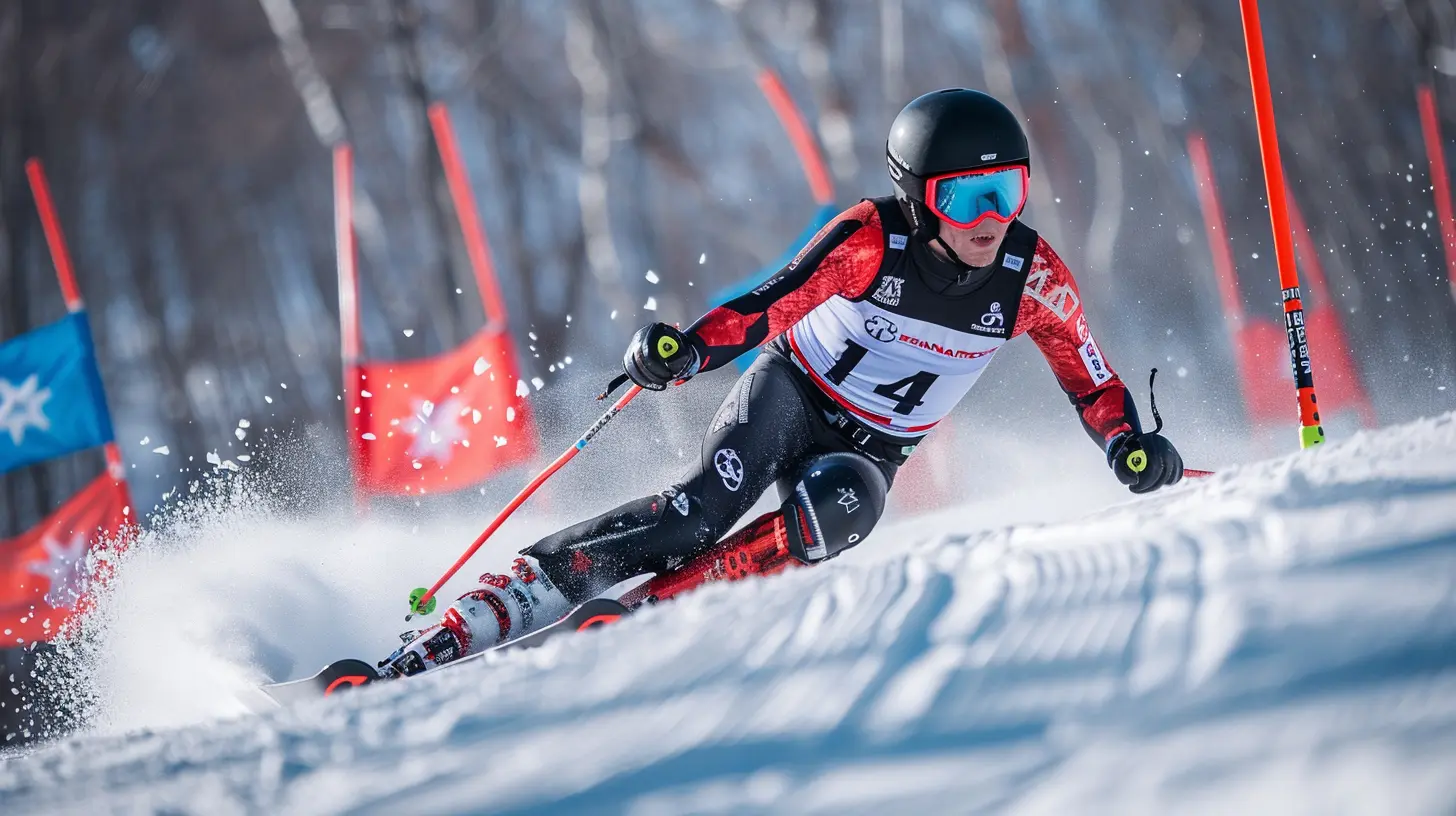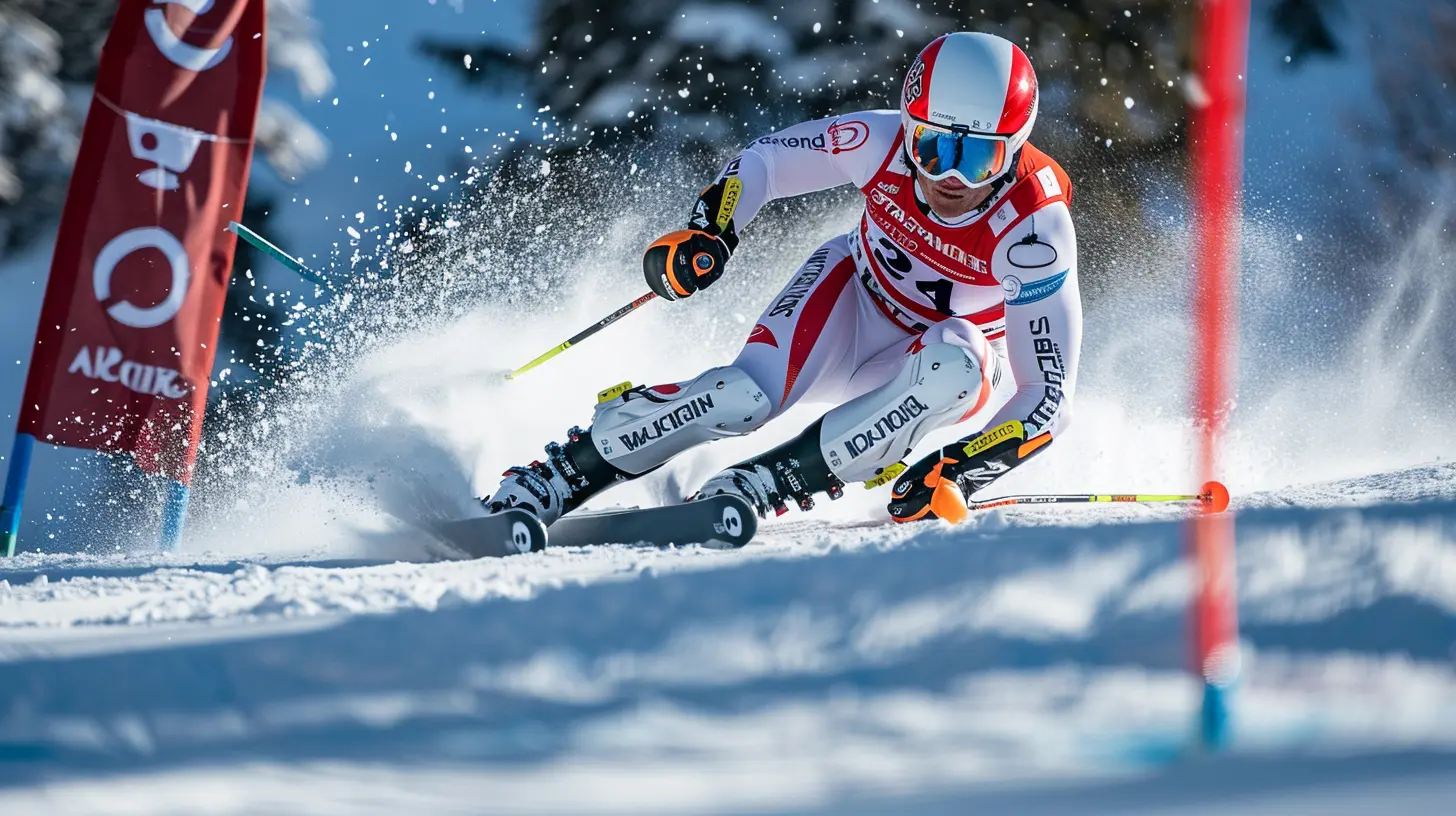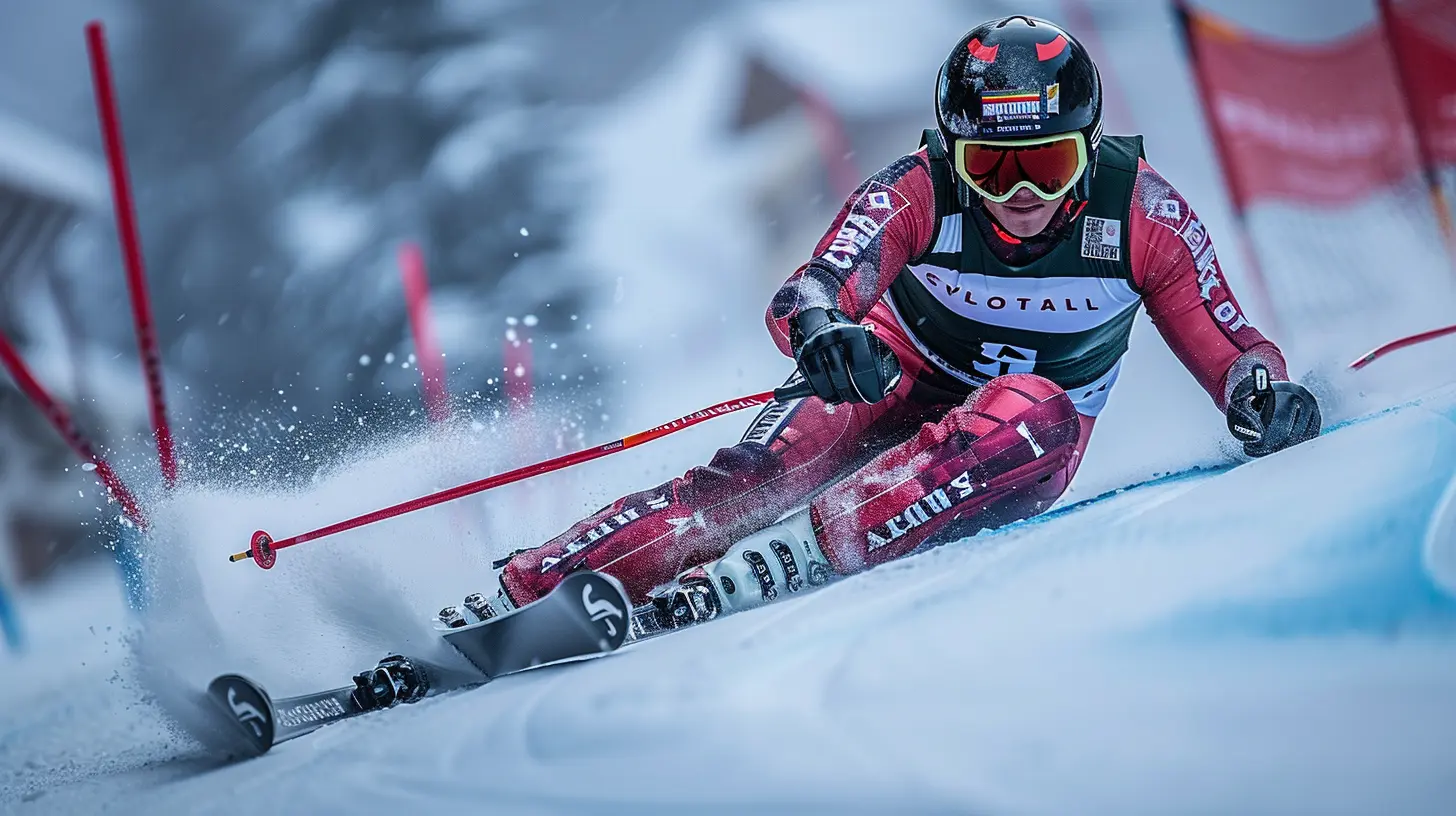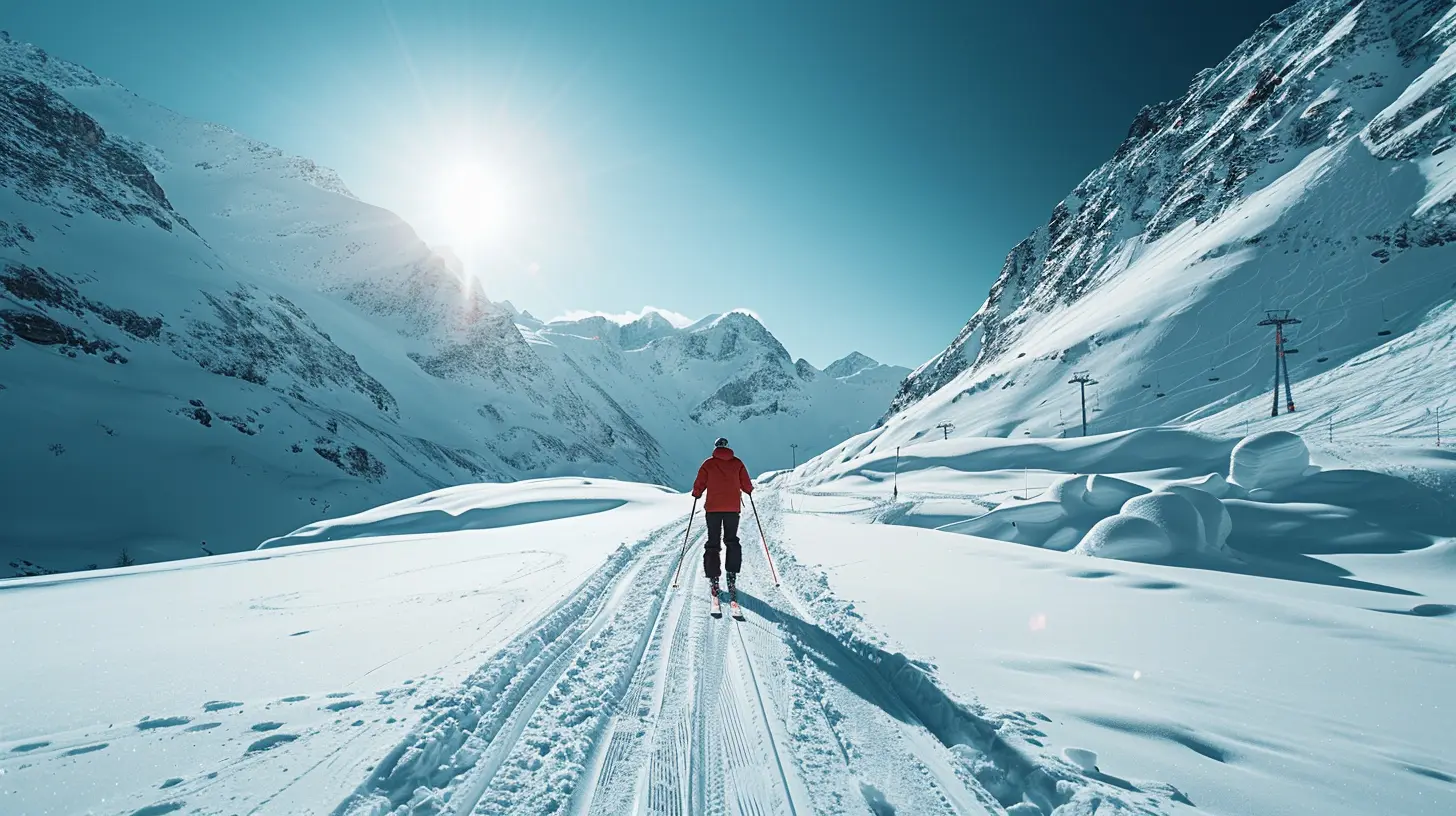The Mental Game of Skiing: Overcoming Performance Anxiety
6 June 2025
Skiing—just the mention of it can spark images of powdery slopes, crisp winter air, and that freeing sensation as you carve down a mountain. But let’s be real for a second. While skiing is a blast, it can also mess with your head. Yes, I’m talking about the mental side of skiing—the part not often captured in those perfect Instagram shots.
If you've ever felt your heart race faster than your skis before a run, or doubted your every move even though you've trained for weeks, you know what I mean. Performance anxiety on the slopes? It’s real, and honestly, it's more common than you think.
In this article, we’re diving deep into the mental game of skiing. We’ll look at what causes performance anxiety, how it shows up, and most importantly, how to kick it to the curb and ski with confidence. So grab a hot cocoa, sit back, and let’s have a heart-to-heart about what's going on under the helmet.
What Is Performance Anxiety in Skiing?
Before we can defeat the beast, we’ve got to understand it. Performance anxiety in skiing is that overwhelming tension, worry, or even fear that creeps in before or during a run—especially in competitive events or challenging terrain.It might show up as:
- Racing thoughts
- Sweaty palms (even in freezing temps!)
- Tight muscles
- Self-doubt
- Hesitation during turns
- Totally forgetting technique
Sound familiar? The battlefield isn’t always on the slope—it’s often in your own head.
Why Do Skiers Feel Anxious?
Let’s bust a myth right now: Anxiety doesn’t mean you’re weak or inexperienced. Even Olympic-level skiers face mental hurdles. That said, anxiety often creeps in for a few key reasons:1. Fear of Failure
This one’s huge. Whether you’re trying to place in a competition, impress your coach, or simply beat your personal best, the pressure to succeed can be crushing. It can make skiing feel like an exam instead of fun.2. Fear of Injury
Skiing is a high-speed sport, and wipeouts are part of the deal. But for some, especially those recovering from past injuries, the fear of getting hurt again can be paralyzing.3. External Pressure
The weight of expectations—parents, teammates, coaches, even your own—can take the joy right out of the sport and replace it with anxiety.4. Perfectionism
Let’s face it: many skiers are type-A, high-achievers who hate messing up. But skiing is unpredictable, and chasing perfection? It’s a recipe for mental burnout.
Recognizing the Signs: Is It Just Nerves or Something More?
Feeling a little nervous before a run is normal—even helpful. It means you care. But when nerves turn into full-blown anxiety that affects your performance or enjoyment, it's time to do something about it.Here’s what to look out for:
| Symptoms | What It Feels Like |
|----------|--------------------|
| Physical | Racing heart, shaky legs, tight chest |
| Emotional | Panic, irritability, dread, self-doubt |
| Mental | Negative self-talk, over-thinking, losing focus |
| Behavioral | Avoiding certain runs, choking under pressure, quitting mid-run |
If these sound familiar, don’t sweat it—you’re not alone, and there are proven ways to take back control.
The Power of the Mind: How Mental Training Helps
Remember when your coach said skiing is 80% mental and 20% physical? They weren’t kidding. Your brain controls how you move, how you focus, and how you react. Mastering your mindset is just as important as nailing your technique.Mental training isn’t woo-woo or reserved for sports psychologists. It's practical, powerful, and (bonus) totally free. Let’s break it down.
1. Visualization: See It, Ski It
Ever notice how great athletes talk about “seeing the race in their head” before it happens? That’s visualization—and it works.Here’s how to do it:
- Close your eyes before a run.
- Picture the trail, the turns, the snow under your skis.
- Imagine yourself skiing it perfectly—fluid, fast, confident.
- Use all your senses. What do you hear? How does the air feel?
By “skiing” it in your mind first, you teach your brain and body what to expect. It’s like a mental dress rehearsal.
2. Breathwork: The Secret Weapon
When anxiety strikes, your breath gets shallow. That signals your brain to panic more. But by breathing deeply and slowly, you flip the switch back to calm.Try this super simple method:
- Inhale through your nose for 4 seconds.
- Hold for 4 seconds.
- Exhale through your mouth for 6 seconds.
Do a few rounds before your run, and boom—you’re grounded, focused, and oxygen-rich.
3. Positive Self-Talk: Be Your Own Hype Crew
Thoughts become actions. If you’re telling yourself, “I’m gonna fall,” or “I’m not good enough,” your body will follow. Flip the script.Your new mantra? Something like:
- “I’ve got this.”
- “Stay smooth and trust your training.”
- “One turn at a time.”
Talk to yourself like you would to your best friend—not your worst critic.
4. Focus on the Process, Not the Outcome
If you obsess over winning, losing, time-splits, or impressing others, you’ll psych yourself out before you even start.The key is zoning in on what you can control:
- Your turns
- Your breathing
- Your posture
- Your effort
Focus on skiing well, not being perfect. Let the outcomes take care of themselves.
5. Routine is Your Best Friend
Ever notice how elite skiers have the same pre-run rituals? That’s not superstition—it’s science.Routines help tell your brain, “It’s go time,” and reduce uncertainty, which eases anxiety.
Design your own pre-run checklist:
- Stretch
- Run through visualizations
- Check your gear
- Deep breaths
- Say your mantra
The more consistent your routine, the more grounded you’ll feel.
When Anxiety Gets Bigger Than The Slopes
Sometimes anxiety doesn’t fade with tricks or training. If it starts affecting your love for the sport, your sleep, or your day-to-day life, talk to a pro. Sports psychologists, counselors, or performance coaches can work wonders.There’s no shame in asking for help. In fact, it’s one of the most powerful things you can do.
Real Talk: You're Not Alone
Every skier—from first-timers to World Cup racers—has wrestled with self-doubt. The key isn’t avoiding it, it’s learning how to ride through it, like carving through moguls with grit and grace.You’re braver than you think, and stronger than you know. And with the right mindset tools in your backpack, no slope is too steep.
Quick Tips To Beat Performance Anxiety on the Slopes
Need a cheat sheet for the next time your brain starts playing tricks on you? Here you go:- ✅ Breathe deep and slow
- ✅ Visualize a successful run
- ✅ Use positive self-talk
- ✅ Stick to a calming routine
- ✅ Focus on effort, not results
- ✅ Talk to someone you trust
- ✅ Celebrate small wins
- ✅ Laugh it off when you mess up (Hint: everyone does!)
Remember, skiing is supposed to be fun. Don’t let anxiety rob you of that joy. Keep it light, keep it real, and most importantly—keep skiing.
Final Thoughts
At the end of the day, skiing isn’t just about hitting gates or landing tricks—it’s about freedom, challenge, and connection with the mountains. But to truly thrive on the slopes, mastering the mental side is just as vital as tuning your edges.Performance anxiety is natural. But it doesn’t have to own you. With the right techniques, a healthy mindset, and a little self-compassion, you can transform that fear into fuel—and ski with more confidence than ever before.
So the next time performance nerves hit you, smile inside that helmet, take a breath, and tell yourself: “I’ve dealt with worse. Let’s shred.
all images in this post were generated using AI tools
Category:
SkiingAuthor:

Onyx Frye
Discussion
rate this article
3 comments
Ziva Potter
Ah yes, because nothing says 'calm' like hurtling down a mountain on two planks while your brain screams, 'What if I crash into a tree?'
June 19, 2025 at 4:53 AM

Onyx Frye
Absolutely! Embracing the thrill can help shift our focus from fear to enjoyment.
Zadie Gutierrez
Great article! The insights on managing performance anxiety are invaluable for skiers. Mental resilience is just as crucial as physical skills in achieving success on the slopes.
June 14, 2025 at 10:45 AM

Onyx Frye
Thank you for your kind words! I'm glad you found the insights helpful. Mental resilience truly plays a vital role in skiing success!
Kaitlin Cummings
Ah, the mental game of skiing—because nothing screams 'freedom' like panicking on a mountainside! Who needs fresh powder when you can master the art of sweating profusely and overthinking every turn? Maybe I’ll just stick to the bunny slopes and my cozy couch instead!
June 10, 2025 at 3:48 AM

Onyx Frye
Skiing is indeed a mental challenge, but overcoming that anxiety can lead to incredible freedom and joy on the slopes! Embracing the journey, even with its nerves, can transform your experience.



